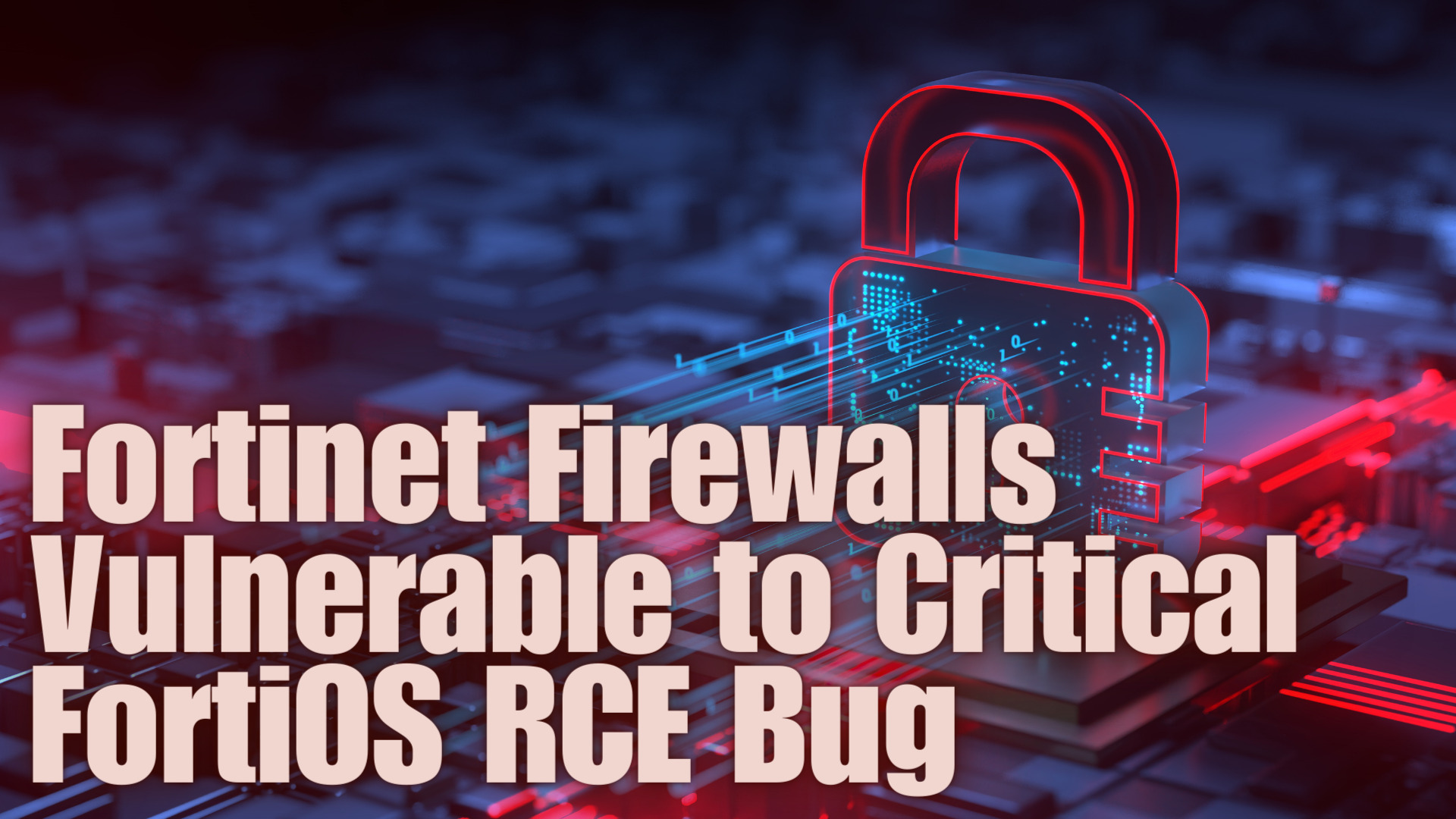300,000+ Fortinet Firewalls Vulnerable to Critical FortiOS RCE Bug
If you’re one of the 300,000+ organizations that use Fortinet firewalls, you may be at risk of a critical vulnerability. A heap-based buffer overflow problem in FortiOS, the operating system that runs on Fortinet firewalls, has left these devices open to remote code execution. The severity score of this vulnerability is 9.8 out of 10, making it a significant threat to your network’s security.
Understanding the implications of this vulnerability is crucial. Attackers can exploit this vulnerability to access your network, steal sensitive data, and cause significant damage. The potential impact of this vulnerability is far-reaching, and it’s essential to take action to address the issue. In this article, we’ll explore the critical FortiOS RCE bug and what you can do to mitigate the risk.
Key Takeaways
- A critical vulnerability in FortiOS has left over 300,000 Fortinet firewalls at risk of remote code execution.
- Attackers can exploit this vulnerability to access your network and steal sensitive data.
- It’s crucial to take action to address this vulnerability and protect your network from potential attacks.
Understanding the Fortinet Firewalls
If you are using Fortinet firewalls to protect your network, it is important to understand how they work and their vulnerabilities. Fortinet firewalls are designed to provide security by filtering traffic between different networks, such as the Internet and your internal network. They use a combination of hardware and software to inspect network traffic and block any malicious or unwanted traffic.
Fortinet firewalls are widely used by businesses and organizations worldwide because they are easy to use, reliable, and effective. They have various features, including intrusion prevention, antivirus, web filtering, and VPN support. They also offer centralized management and monitoring capabilities, making it easier to manage multiple firewalls from a single console.
However, like any technology, Fortinet firewalls are not immune to vulnerabilities and security flaws. The recent discovery of a critical FortiOS RCE bug has highlighted the importance of keeping your firewalls up-to-date with the latest security patches and firmware updates. This vulnerability could allow an attacker to take control of a vulnerable firewall and gain access to sensitive information or launch further attacks.
It is important to follow best practices for firewall management and security to minimize the risk of a security breach. This includes regularly updating your firewalls with the latest security patches, configuring them correctly to block unwanted traffic, and monitoring them for any signs of suspicious activity. By taking these steps, you can help protect your network from cyber threats and keep your business running smoothly.

Critical FortiOS RCE Bug
If you are using a Fortinet firewall, you should be aware of a critical FortiOS RCE bug that has been discovered. This bug affects over 300,000 Fortinet firewalls worldwide, leaving them vulnerable to cyberattacks.
The FortiOS SSL VPN web portal vulnerability allows remote attackers to execute arbitrary code without authentication. This means that an attacker could gain access to your network and steal sensitive information, install malware, or even take control of your systems.
Cybersecurity researchers discovered the vulnerability and immediately reported it to Fortinet. Fortinet has since released a patch for the vulnerability, but you must update your Fortinet firewall as soon as possible to ensure that you are protected.
If you are unsure whether the vulnerability affects your Fortinet firewall, check the Fortinet Advisory page for more information. Additionally, you should review your firewall logs to ensure that there have been no unauthorized access attempts.
In conclusion, the critical FortiOS RCE bug severely threatens your network security if you use a Fortinet firewall. You must update your firewall immediately to protect your systems from potential cyberattacks.
Implications of the Vulnerability
The critical FortiOS RCE bug has put over 300,000 Fortinet firewalls at risk of exploitation by malicious actors. This vulnerability allows attackers to execute arbitrary code remotely and access sensitive information stored on the firewall.
If your organization uses Fortinet firewalls, immediately securing your systems is essential. Failure to do so could lead to a data breach, loss of sensitive information, and damage your organization’s reputation.
The implications of this vulnerability are significant, as it can be exploited by threat actors to gain unauthorized access to your network, steal sensitive data, or launch a ransomware attack. Moreover, the vulnerability can be exploited without authentication, making it easier for attackers to launch attacks.
To mitigate the risk of exploitation, it is recommended that you apply the latest patches released by Fortinet immediately. Additionally, monitoring your network for any suspicious activity and limiting access to sensitive information to authorized personnel is essential.
In conclusion, the critical FortiOS RCE bug severely threatens organizations using Fortinet firewalls. Taking immediate action to secure your systems and protect your sensitive data from being stolen or compromised.
Addressing the Vulnerability
Vulnerability Patch
To address the vulnerability in your Fortinet firewall, it is important to apply the patch released by Fortinet as soon as possible. The patch fixes the critical FortiOS RCE bug and prevents attackers from exploiting it. The patch is available for all affected versions of FortiOS, including 6.0, 6.2, and 7.0.
To apply the patch, you can follow the instructions provided by Fortinet. The process involves downloading the patch, uploading it to your firewall, and installing it. After applying the patch, rebooting your firewall is recommended to ensure the changes take effect.
Preventive Measures
In addition to applying the patch, you can take several preventive measures to reduce the risk of exploitation. These measures include:
- Enabling multi-factor authentication (MFA) for all user accounts on your firewall. This helps to prevent unauthorized access to your firewall, even if an attacker has obtained valid credentials.
- Restricting access to your firewall’s management interface to trusted IP addresses or networks. This helps to prevent attackers from accessing the interface from untrusted locations.
- Monitoring your firewall’s logs for suspicious activity. This can help you detect and respond to attacks promptly.
By applying the patch and implementing these preventive measures, you can reduce the risk of exploitation of the critical FortiOS RCE bug in your Fortinet firewall.
Conclusion
Now that you know the critical FortiOS RCE bug affecting over 300,000 Fortinet firewalls, it is crucial to take immediate action to address this vulnerability.
The severity of this vulnerability cannot be overstated. Attackers can exploit this bug to gain unauthorized access to your network and potentially steal sensitive information or cause irreparable damage to your infrastructure.
You should update your Fortinet firewalls to the latest version of FortiOS as soon as possible. Additionally, you should review your network security policies and ensure that your firewall configurations are up-to-date and properly configured to minimize the risk of a successful attack.
Remember, the security of your network is only as strong as its weakest link. Take the necessary steps to protect yourself and your organization from this critical vulnerability.
Frequently Asked Questions
How many Fortinet firewalls are affected by CVE-2023-25610?
According to the Fortinet advisory, more than 300,000 Fortinet firewalls are affected by CVE-2023-25610.
What is the impact of CVE-2023-25610 on Fortinet firewalls?
The CVE-2023-25610 vulnerability allows an attacker to execute arbitrary code on a vulnerable Fortinet firewall. This can result in a complete compromise of the firewall and the network it is protecting.
Is there an exploit available for CVE-2023-25610?
Yes, there are reports of an exploit for CVE-2023-25610 being actively used in the wild. It is important to apply the patch as soon as possible to mitigate the risk of exploitation.
What other vulnerabilities have been found in Fortinet products?
Fortinet has had several vulnerabilities in its products over the years. Some of the notable ones include CVE-2018-13379, CVE-2019-5591, and CVE-2020-12812.
How can I secure my Fortinet firewall against CVE-2023-25610?
Fortinet has released a patch for CVE-2023-25610, and applying the patch as soon as possible is recommended. Additionally, it is recommended to follow best practices for securing your firewall, such as restricting access to the management interface and keeping up-to-date with security updates.
What is the path traversal vulnerability in FortiOS, and how does it relate to CVE-2023-25610?
The path traversal vulnerability in FortiOS, CVE-2023-25611, allows attackers to read sensitive files on a vulnerable Fortinet firewall. This vulnerability is related to CVE-2023-25610 because they involve the same code execution vulnerability in FortiOS.



